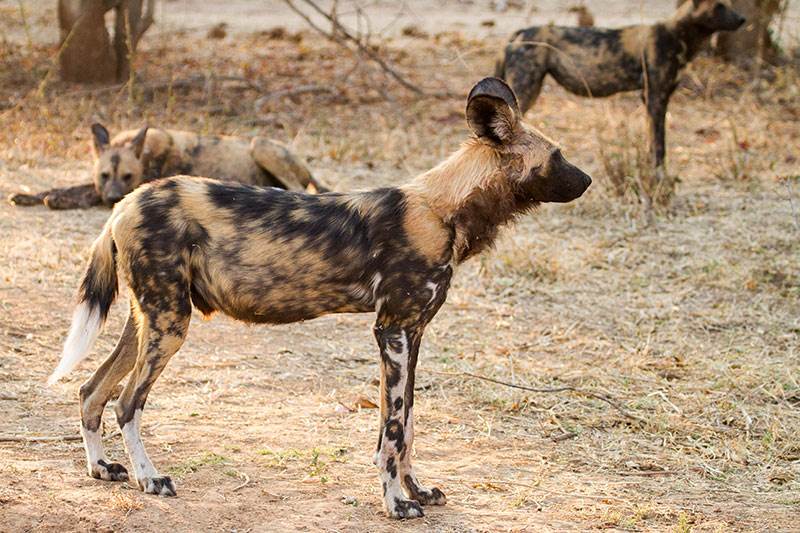African Wilddog - Spotted Hunting Dog facts
The African wild dog, also called the spotted hunting dog, was once found across the whole of Africa.
Causes of their declining numbers are attributed to disease and habitat loss.
This species is considered endangered in Africa although they are still moderately abundant in Botswana and the Zambezi valley.
Field studies have shown that the wild dog is a highly intelligent and social animal.


African Wild Dog
Like most predators, it plays an important role in eliminating sick and weak animals, thereby helping maintain a natural balance and ultimately improving prey species.
Unfortunately wild dogs are undeservedly perceived as voracious killers of game and livestock. The stereotype of the wild dog as a cruel butcher is slowly being replaced by a less harsh image
Family Life
The pack has a communal breeding burrow and the whole pack co-operate in bringing food which they regurgitate for the young who first go through a begging ritual.
Wild Dogs live in socially complex packs composed of several related adult males and one or more related adult females originating from another pack.
Often only the dominant bitch will rear pups successfully although there is often a preponderance of male pups in a litter.
African wild dogs are nomadic and wander continuously, never staying long in one place.

Hunting
Running at up to 55 km/h for several kilometres and paying no attention to wind direction, the dogs do not bother to hide when approaching their prey.
Living in groups of 10 – 20 they are very efficient hunters using the open plains or savannahs and depend on their excellent eyesight and stamina to run down their prey.
They usually take small antelope but packs have been known to take animals as large as the kudu or waterbuck.
